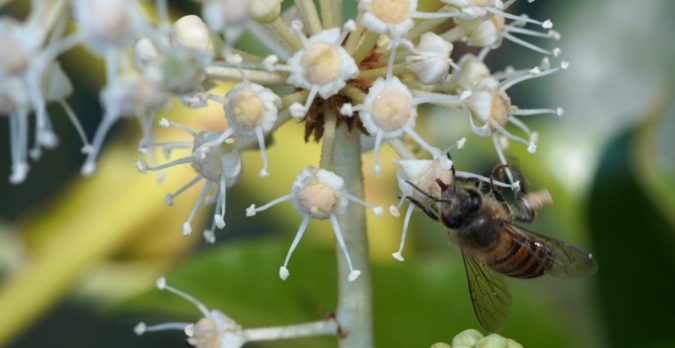| Family: | Araliaceae |
| Genus: | Fatsia |
| Species: | F. japonica |
| Common names: | paperplant, false castor oil plant, Japanese aralia. Chinese name八角金盘 |
| ZBAS | 7 |
OK since I have been writing winter flowers last few days, here is another one I have missed. A commonly planted flower in China, that again blooms during Nov to Jan and I have seen only Apis cerana foraging on it (no Western honey bees! too cold for them?) and also wasps cruising around on this flower — they would be looking for A. cerana to prey on and bring their thorax back to feed their larvae. This plant is also a medicinal plant in China. This plant is a true “japonica”, it originated in Japan but used in China (outdoor or even indoors) widely. There are many other plants (perhaps also animals) named “japonica” simply because more Westerners were in Japan and they described them there first but actually originated in China or endemic in both countries (e.g. Camellia japonica, Styphnolobium japonicum).
I forgot I had photos of this plant so I tried to shoot some A. cerana foraging on this plant while I was in Nanchang Jiangxi, on a quite cold day. In morning it was about 11°C and I saw bees foraging on it already. In the afternoon it was warm enough to see A. mellifera foraging on common camellia on that day, perhaps around 16°C.
- One A. cerana foraging on Fatsia japonica. It is clear from this photo that she is going for the nectar based on her behavior (sticking her proboscis out to lick the nectar).
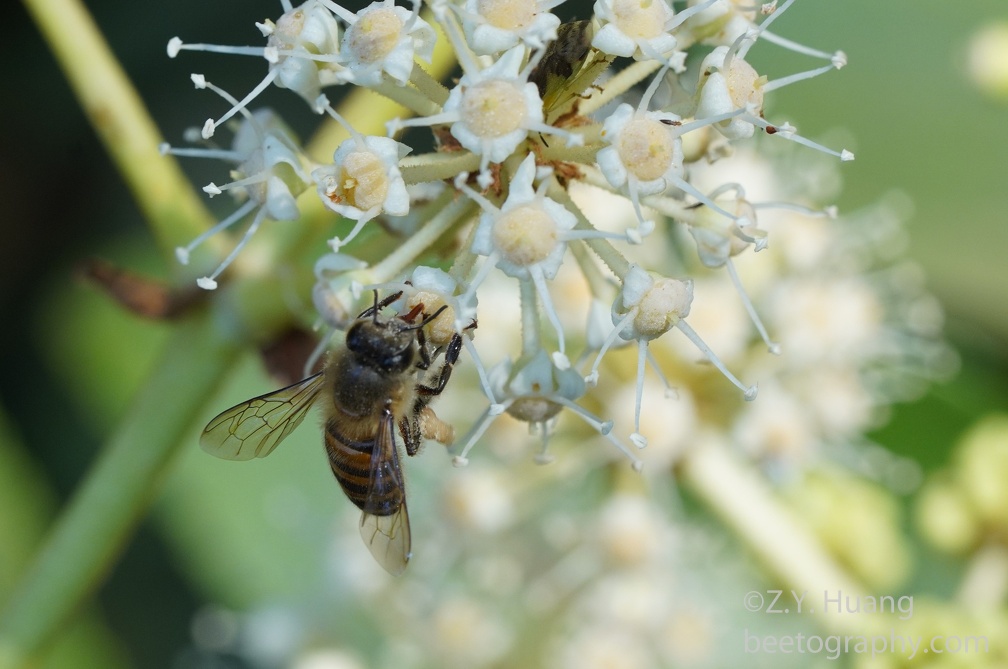
2. Another photo of a bee licking the nectar, which must be quite abundant.
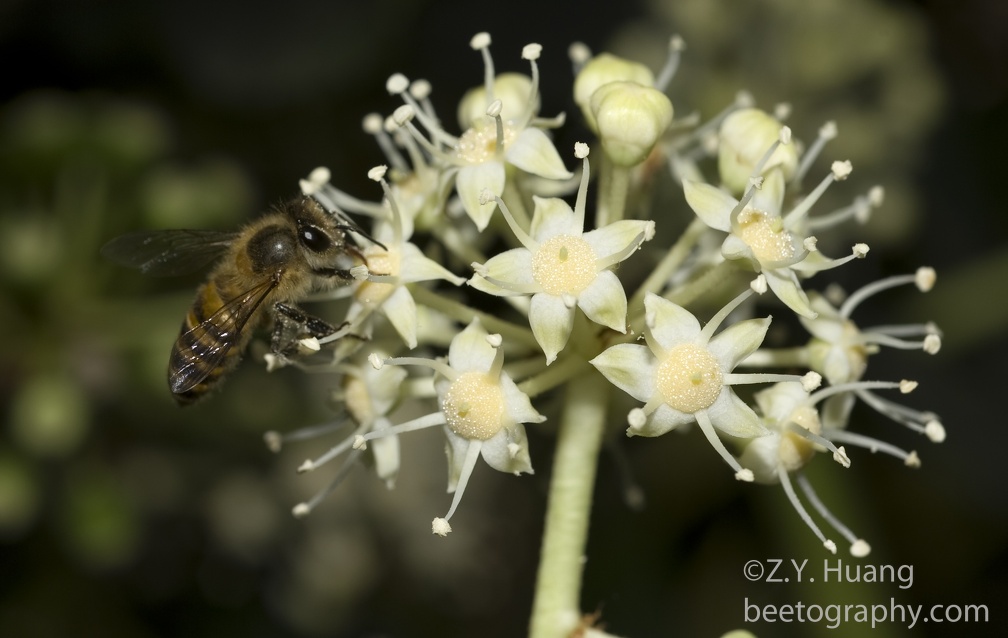
3. A bee in flight. Here you can also see a bit of pollen on her right hind leg. These pollen must be accidental based on its size.
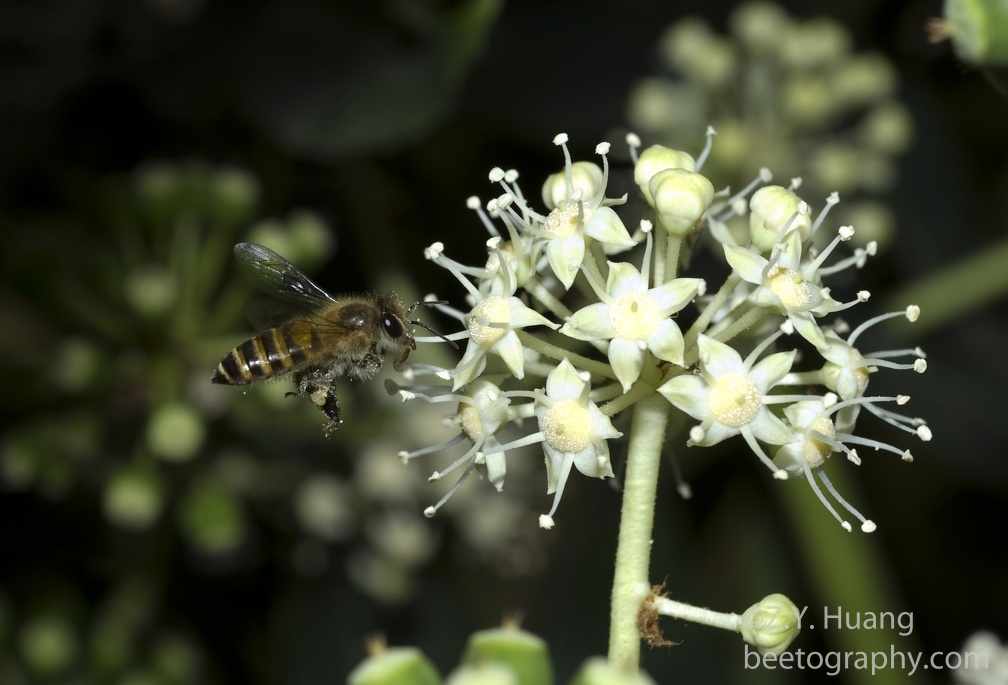
4. Another bee showing the bit of pollen on the left hind leg (usually they are quite symmetrical on both sides).
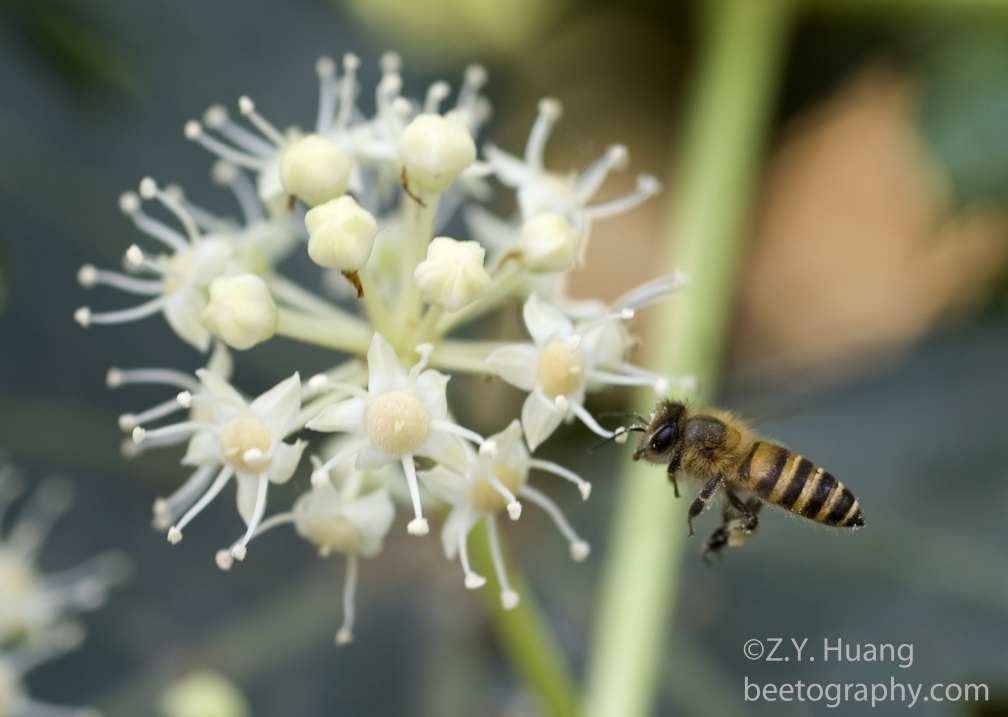
Other flowers in the Araliaceae family:
English ivy (to come)

